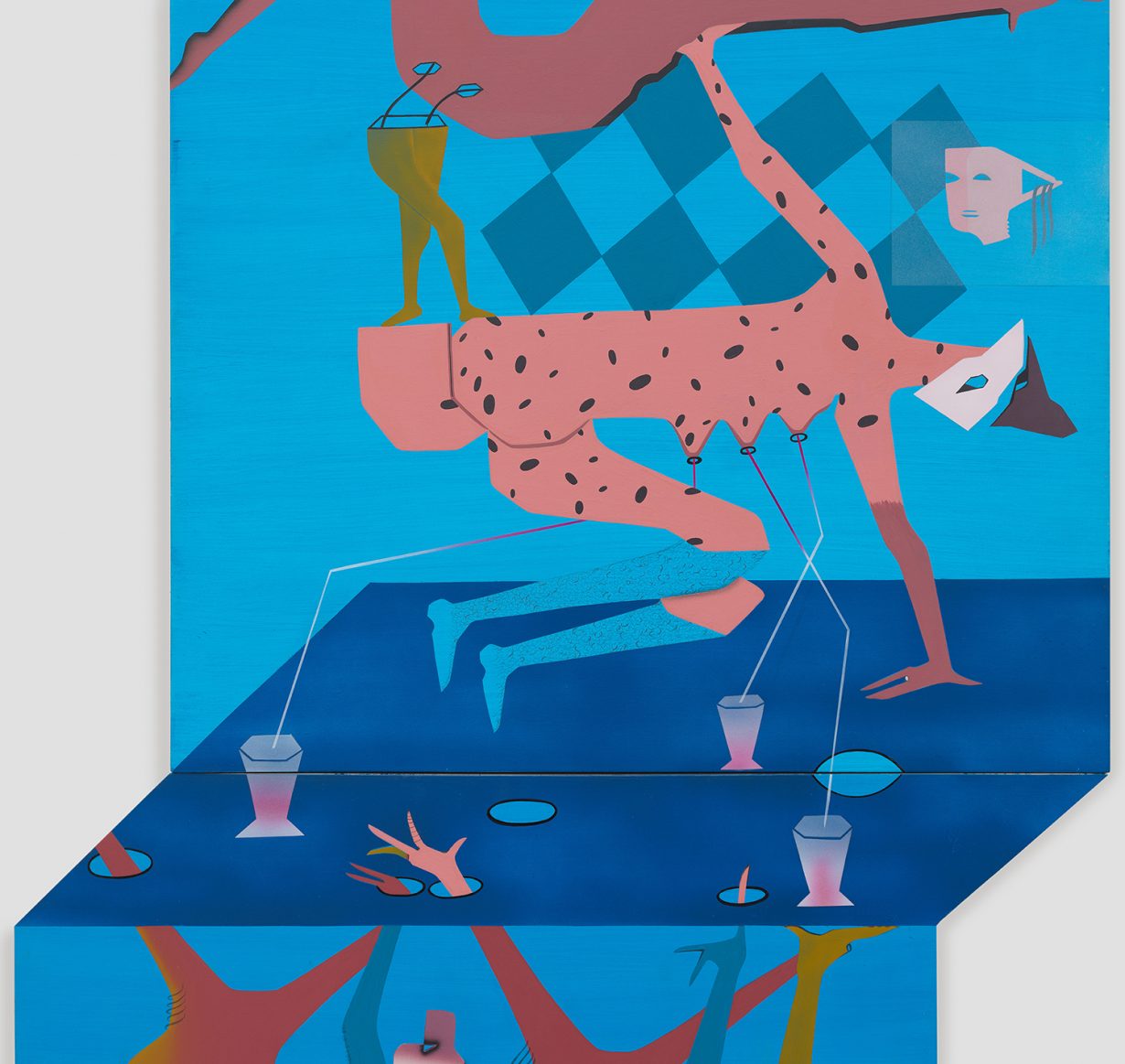Melissa Tan tracks destruction and development; Maryam Hoseini paints surreal stories; Zarina Bhimji hones in on knowledge systems; and preparing for the NGV Triennial
Seeking to trace the course of a nation’s history, Singaporean artist Melissa Tan’s The Dream from the Other Side (through 13 December) is presented by the Singapore Art Museum (SAM)’s Mini Mobile Museum. A collaboration with the National Library Board, the Mobile Museum showcases a selection of works from SAM’s permanent collection in libraries across the city state (SAM’s own premises are currently closed for renovation). Tan’s installation will be shown across three libraries (Woodlands, Jurong and Tampines regional libraries) and uses maps (beginning with the earliest topographical map of the city, drawn in 1958) and topographical sculptures (newly commissioned for the show) to document how these areas have been transformed by destruction and development. ‘The work invites audiences to observe these modifications as reflections of the constructive changes around us,’ says SAM’s press release. Singapore has always been pretty adept at hiding its scars.

In Dubai, a new series of paintings by Iranian artist Maryam Hoseini is on show at Green Art Gallery (through 7 January). Often presented on shaped or overlapping panels, the works’ vibrant blues and warm pinks belie what can be unsettlingly surreal narratives. Crazy Fears (2020), for example, features a triple-breasted woman lactating through straws into cocktail glasses, while a quartet of other bodies dance up to grab them through holes in the table. The many-breasted figure reappears in Trapped But Together (2020), this time with a tiger-skinned twin growing out of her neck and playing a series of holes in the main figure’s leg, as though she were some sort of woodwind instrument. All that may seem extremely off in the hygienic age of COVID-19, but this is a morphing, haunting and genuinely intriguing series of meditations on gender, identity and relationships with other bodies.

In nearby Sharjah, Black Pocket, at the Sharjah Art Foundation (through 10 April), is a survey of works by London-based Ugandan-Asian photographer Zarina Bhimji. Back in 2007, Bhimji was nominated for the Turner Prize for her photographs documenting the aftermath of Idi Amin’s expulsion of 60,000 Asians from Uganda in 1972. The current exhibition centres around three film works, Out of Blue (2002), Yellow Patch (2011) and Jangbar (2015), and focuses on the artist’s interest in neglected systems of knowledge and how we understand ourselves in relation to time and place.

In Melbourne, the National Gallery of Victoria (NGV) is preparing to unleash the latest edition of the NGV Triennial (19 December – 18 April). Featuring 86 works by over 100 artists, it promises a ‘visually arresting and thought-provoking view of the world at this unique moment’. Don’t they all. But standing out from the crowd is a presentation of 15 large-scale bark paintings and nine larrakitj (hollow poles) by Yolngu woman Dhambit Mununggurr, who was born into a family of celebrated artists and musicians (her father, the artist Mutitjpuy Mununggurr, has been an inspiration for many of her works), was hit by a truck in 2005 and was left wheelchair-bound, and then relearned to paint with her less-favoured left hand. Her work will be surrounded by those of crowd-pleasers including Jeff Koons, JR, Alicja Kwade, Cerith Wyn Evans, interior designer Faye Toogood, architect Kengo Kuma (who is collaborating with artist Geoffrey Nees to construct a walkway leading to a newly acquired painting by Lee Ufan), among (obviously) many others.
